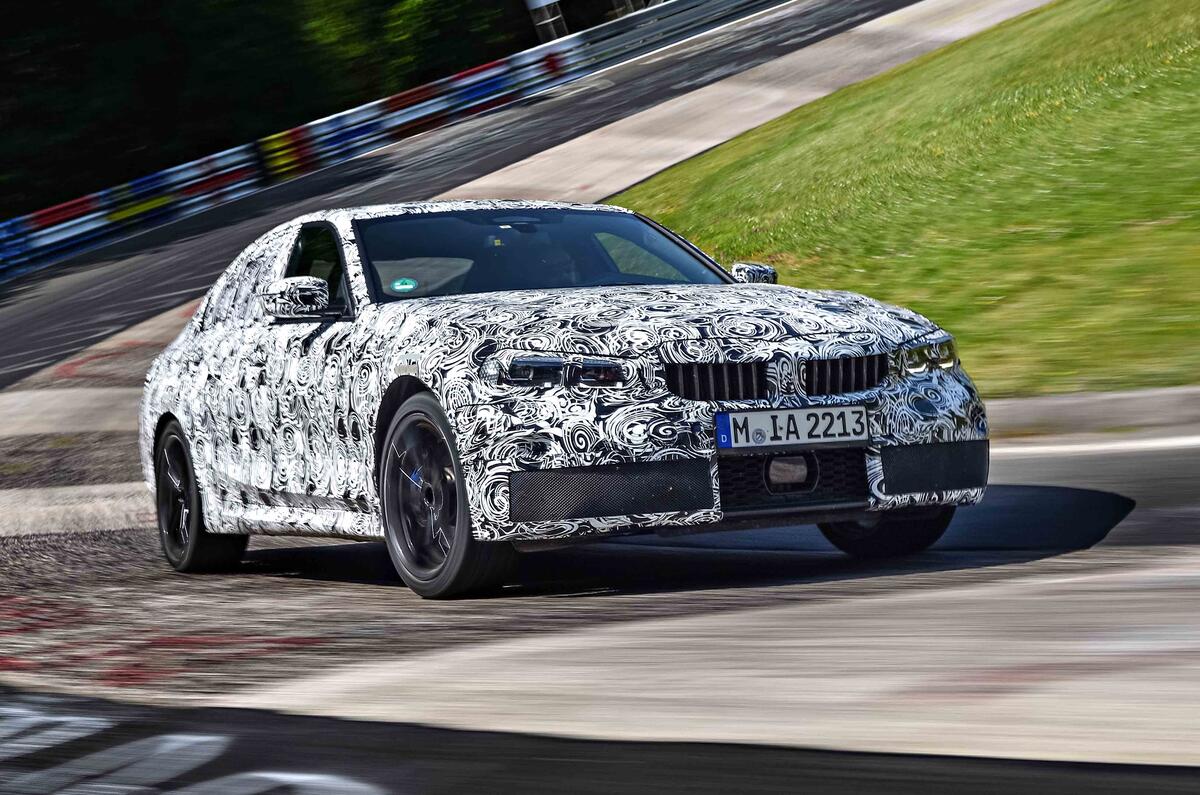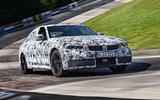In a car market that almost always makes it harder for a successful brand to stay on top than to get there in the first place, the BMW 3 Series is beginning to look like a car of gradually waning fortunes. Will the good times ever roll for it quite like they did in its late 90s and noughties pomp?
For all sorts of reasons — not least because it’s hard to think of another car in recent times that has achieved such critical acclaim and sales popularity in equally phenomenal measures — we might wonder.
The new 3 Series has been unveiled - get your first look here
For the next-generation 3 Series, due to be unveiled at this autumn’s Paris motor show and appear on UK roads in early 2019, reasserting the compact executive saloon segment dominance that its predecessors have enjoyed looks a particularly tall order. It faces a Mercedes-Benz C-Class tha's good enough in its latest iteration to comprehensively outsell the outgoing F30 3 Series. The Alfa Romeo Giulia and Jaguar XE, neither of which existed at the launch of the sixth-generation 3 Series seven years ago, are both plainly out to purloin BMW’s mantle as the maker of the best-handling compact saloon. Up until now, you might say that mantle has been ‘on loan’; first at Gaydon, then more recently in Turin. But soon it’ll be the time for Munich to either reclaim it or give it up more permanently.
Unlike us, of course, BMW’s own executives, designers and engineers have not been wondering, or indeed worrying, about what the future holds; confident in the strength and equity built into the 3 Series brand over more than four decades, they’ve clearly been getting on with the job of bringing the world the seventh-gen version of a car whose name has become shorthand for its segment.
And they’re almost finished. With only the finer points of software calibration and tuning still to do, BMW recently made the new 3 Series available to us in prototype form for a short test drive around German’s Eifel mountains and a not-so-short couple of laps of the Nürburging Nordschleife.
![]()























Join the debate
Add your comment
Specifically turbo'd
All I can say is if you take a 4 cylinder 2 litre engine and expect it to work well when its being asked to produce @125 bhp per litre, day in day out it will be unreliable that's just pure engineering facts and it comes as no surprise that the manufacturer is being held to account when they think they only have to make cars "reliable" for the warranty period. This is not a personal attack on any of the comments made, it is an engineering comment and when I commented that this would be the case many people told me to "go eat my shoes".
Symanski Sundym
Fully aware of different consumer laws in the UK and the USA. That is why you were in the position you were in. You clearly do no understand that. Also the engine recalls in the USA were for a different engine to yours. Tried to point that out. Again you are not getting that. To be brief - give it a rest. As for Sundym and his Trumpisms - hogwash, lots of people are fed up with Symanski and his tripe about a duff car he may have owned 10 years ago, but constant attacks on the reputation of companies and people is very Trump.
Same family.
Obviously you don't appreciate that it was of the same family and generation of engines. The same parts are used on both and were warranted out to ten years, which would have easily covered my car. In the USA because they have both better consumer laws, and more importantly, BMW have been forced by their customers in the USA to support them. Something that we in Britain & Europe should learn from.
The recalls in the USA were for the same engine parts. It's not a difficult concept, is it?
Symanski and Sundym?
Looks like Symanski has a second Autocar sign in as Sundym. Particular give away - the use of “ym” in the user name. Biggest give away - griping on and on about BMW engines. Again.
Wow
Sorry, but not true.
Sorry to spoil your theory but I have only one sign-in on Autocar. If all the evidence you've got is two letters in a sequence you really are grasping at staws!
Or could it also be that BMW engine problems aren't as rare as you'd like to believe?